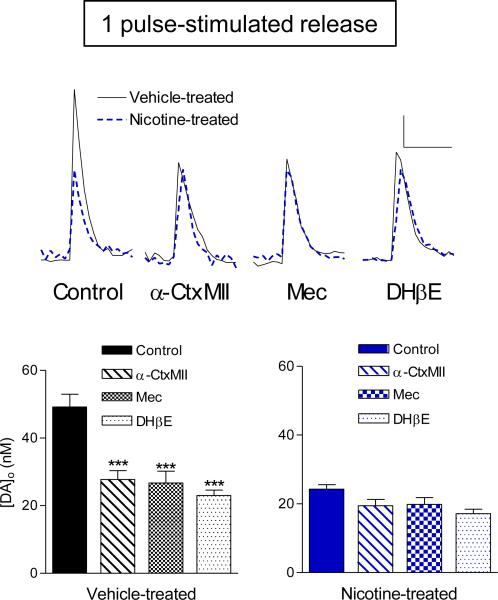Fig. 2.
Long-term nicotine treatment abolishes the nAChR antagonist-induced decrease on single pulse-stimulated dopamine release. Dopamine release [DA]o was measured in the dorsal portion of the accumbens shell in response to single pulse electrical stimulation. Representative traces of [DA]o in the absence (control) and presence of the α6β2* antagonist α-CtxMII (100 nM), the general nAChR blocker Mec (100 μM), and the β2* nAChR antagonist DHβE (100 nM) are shown for vehicle- and nicotine-treated animals. Scale bar represents 10 nM and 0.5 s. Quantitative analyses show that α-CtxMII, Mec, and DHβE similarly affect single pulse-stimulated release in vehicle-treated animals, indicating that nAChR-modulated [DA]o occurs through α6β2* nAChRs. Single pulse-stimulated release was not further decreased in the presence of any of the nAChR antagonists after nicotine treatment. The values represent the mean ± SEM of 3-13 rats. Significance of difference from control release, ***p < 0.001.

